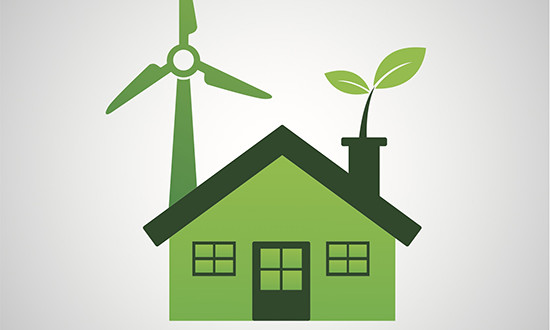6 Benefits of a Green Home
According to NASA, there have been seven cycles of glacial advance and retreats in the last 650,000 years. And these climate changes contribute to the amount of solar energy that our planet receives.
And if you feel like the planet is getting warmer by the day (i.e., less snowfall this year), one of the primary culprits is human activity.
This explains why many homeowners are doing their part to save the environment. And with rising household costs and new environmental protection laws, it makes sense to lean towards having an eco-friendly house.
But if you want more convincing, here are x benefits of having a green home:
Reduced Greenhouse Gases
Greenhouse gas (GHG) emissions are one of the primary reasons behind global warming. Unfortunately, the construction industry contributes a significant amount of GHG.
But do not worry, as there are now a growing number of construction companies that are paving the way for eco-friendly house building.
Some of them use recycled surface materials, while others specialize in solar panel installations. Some companies use renewable materials like bamboo and reclaimed coconut shells in their products.
Regardless, an eco-friendly house reduces GHG emissions, helping the ozone layer to recover.
Reduced Household Cost
Another advantage of building green is that you can save money from your bills.
Replacing your existing light fixtures with CFLs, for example, reduces your energy consumption up to 75%! Plus, it lasts ten times longer than a traditional incandescent bulb.
When you install an Energy Star-qualified CFLs, you can recoup your expenses for about nine months. And you will continue to make energy savings every month after that.
Do you want your light fixtures to last for more than a decade? Consider installing Energy Star-qualified LEDs.
Ensures Ideal Room Temperature
If you are lucky enough to design your own house, we suggest that you consider the indoor temperature.
You can seek a professional’s help and tell him to come up with a house design that minimizes air leakage. Doing so ensures better air quality and even room temperature.
Moreover, designing your own house allows you to include solar panels in your design.
But if you are buying a condo for sale in Quezon City, Philippines, for example, consider a unit with aircon provisions. It would be better if the provision is for a modern aircon model. That’s because such air conditioners have better and programmable thermostats.
Regardless, reducing your thermostat by 10 to 15 degrees allows you to save 5% to 15% on your electricity bill.
Reduced Water Consumption
Aside from your electric bill, a sustainable home allows you to save on your water bills.
Luckily, having a water-efficient home does not mean you have to reconstruct your house. You would be surprised at how a water-efficient toilet can help reduce your water consumption.
According to the American Water Works Association, toilet flushing takes 24% of household water use. But thanks to High-efficiency Toilets and Ultra High-efficiency Toilets, you only consume 0.8 to 1.28 gallons per flush (gpf).
This tantamount to around $110 per year of savings in your water bill.
Reduced Noise From Outside
A sustainable home also means you can block the noise from outside. This feature is a must-have for those who live in the city, where the hustle and bustle are apparent whether you are indoors.
But how is it possible?
For one, a green home has better insulation, which is achieved through design considerations. This includes having better quality windows and installing noise absorbent materials.
If possible, design shared walls and floors to limit noise transfer.
Ensures Durability and Integrity
Just because you are using recycled, renewable, and reclaimed materials, that does not mean that your house is not sturdy.
You can see sustainable houses made of adobe mudbrick, known for their extreme durability and insulation properties. The same thing goes for bamboo flooring, which is also anti-bacterial and water-resistant.
As for the roofing, you can opt for slate, clay, and cementitious materials as these are heavy and durable. But if you want something lighter, consider fiber-cement composite roof materials.
The best part? The natural materials used for green home building tend to last longer.
Conclusion
You may think that having a green home can be costly. But think of it as an investment.
The upfront cost can be expensive, probably because of the materials used. However, it allows you to save energy and water consumption.
Think of your LED lights and high-efficiency toilet as an example. They can cost $5 and $200 on average, respectively.
Yet, a LED light bulb allows you to save around $18 on your electricity bill per year. Meanwhile, a HET makes $110 annual savings on your water bill.
Imagine how much you can save throughout your LED light bulb and toilet’s lifetime. That said, having a sustainable home allows you to protect the environment and bank account.



